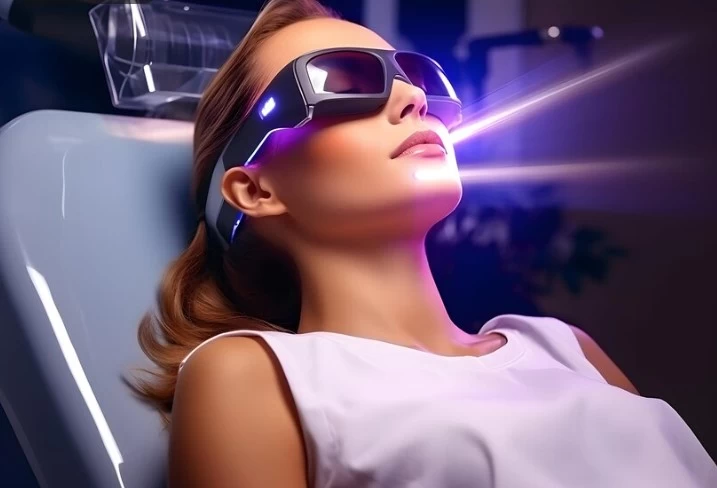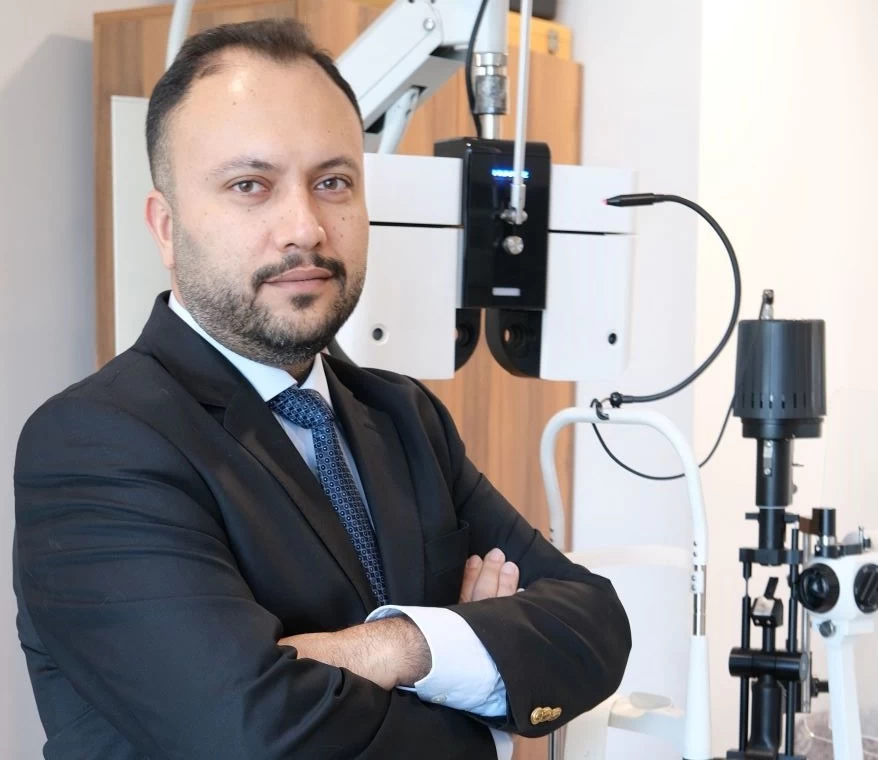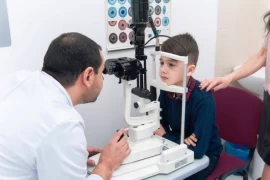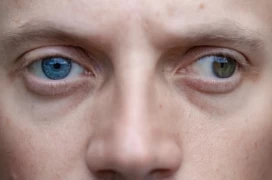
Smile Laser: Modern Technology for Eye Disorders
- Smile Laser: Modern Technology for Eye Disorders
- The History and Development of Laser Eye Treatments
- Smile Laser Technology: A Minimally Invasive Solution
- Advantages of Smile Laser Treatment
- When Is Smile Laser Used?
- Stages of Smile Laser Treatment
- Conclusion and Recommendations
As an ophthalmologist, my priority is always to offer the most advanced and effective treatment methods to enhance my patients' vision quality and correct eye disorders. Eye health is a critical factor that directly impacts the quality of life. Therefore, laser technologies used to correct vision defects have brought revolutionary advancements in ophthalmology. In this article, I will delve into the laser methods used to treat eye disorders and explain why Smile Laser technology is a turning point in this field.
The History and Development of Laser Eye Treatments
The use of laser technology to treat eye disorders dates back to the 1980s. Initially, the photorefractive keratectomy (PRK) method was developed. PRK was one of the first techniques that corrected vision defects by applying a laser to the corneal surface. Then, in the 1990s, LASIK (Laser Assisted In Situ Keratomileusis) technology was introduced. LASIK became a popular option by offering a faster recovery time and less discomfort compared to PRK. However, both methods had certain limitations. PRK had disadvantages such as a long recovery time and surface discomfort, while LASIK, being a procedure that required cutting the cornea, carried a small risk of complications. At this point, Smile Laser technology came into play and revolutionized eye treatment.
Smile Laser Technology: A Minimally Invasive Solution
Smile (Small Incision Lenticule Extraction) Laser represents a third-generation approach in laser eye treatments. Offering a more minimally invasive approach compared to other laser methods, Smile Laser is particularly used to correct common eye disorders such as myopia and astigmatism. The biggest advantage of Smile Laser is that it preserves a larger portion of the cornea, which not only speeds up the recovery process but also minimizes the risk of complications. In Smile Laser treatment, only a small incision of 2 to 4 mm is made in the cornea. Through this incision, a thin lens (lenticule) is removed from the cornea, correcting the refractive error of the eye and providing clearer vision. As it requires less tissue removal compared to other laser treatments, Smile Laser is an ideal solution, especially for patients who experience dry eyes and night vision issues.
Advantages of Smile Laser Treatment
Smile Laser treatment offers numerous advantages. These can be summarized as follows:
- Minimally Invasive Method: Smile Laser does not require large incisions in the cornea. This speeds up the recovery process and allows patients to return to their daily lives quickly.
- Reduced Risk of Dry Eyes: Smile Laser causes less damage to the corneal nerves compared to other laser methods, which reduces the risk of dry eyes after treatment.
- Fewer Complications: The small incision used in Smile Laser eliminates corneal flap complications seen in other methods, increasing the safety of the treatment.
- Fast Recovery Process: Patients treated with Smile Laser typically regain normal vision within a few days and can return to active life within a week.
- Precision: Smile Laser offers high precision in the treatment of myopia and astigmatism, which is a significant advantage, especially for patients with thin corneas.

When Is Smile Laser Used?
Smile Laser is a method we particularly prefer in the treatment of myopia and astigmatism. It is generally suitable for correcting myopia between -1.00 and -10.00 and astigmatism between 0.50 and 5.00. Additionally, it is an ideal solution for patients with thin corneas or those at high risk of dry eyes. Smile Laser also offers an alternative for patients who are not suitable for other laser treatments such as LASIK or PRK. For example, patients with very thin corneas may not be suitable for LASIK, but successful results can be achieved with Smile Laser.
Stages of Smile Laser Treatment
The stages of Smile Laser treatment generally progress as follows:
- Preliminary Examination: The patient's eye health is thoroughly evaluated. Factors such as corneal thickness, eye structure, and others are examined to determine whether the patient is suitable for Smile Laser.
- Local Anesthesia: Local anesthesia in the form of eye drops is applied during the procedure, ensuring that the patient feels no pain.
- Laser Application: The Smile Laser device creates a small incision in the cornea to form and remove the lenticule. This procedure usually takes 10-15 minutes.
- Recovery Process: After the procedure, patients can typically go home within a few hours. Vision quality improves rapidly, and most patients can return to normal activities within a few days.
Conclusion and Recommendations
Laser treatment for eye disorders is one of the most effective solutions offered by modern ophthalmology. Smile Laser stands out as the most innovative and patient-friendly method in this field. Its minimally invasive nature, rapid recovery process, and low risk of complications make Smile Laser the preferred treatment method for both myself and my patients. Eye health is a critical factor that directly impacts the quality of life. Therefore, choosing the right treatment method is crucial for ensuring clear and high-quality vision in the long term. In this regard, Smile Laser offers a safe, effective, and innovative option for correcting vision defects. If you are concerned about your vision and are considering laser treatment, it would be beneficial to consult with an ophthalmologist to obtain detailed information about Smile Laser.

Op. Dr. Murat Ayan
Ophthalmologist





